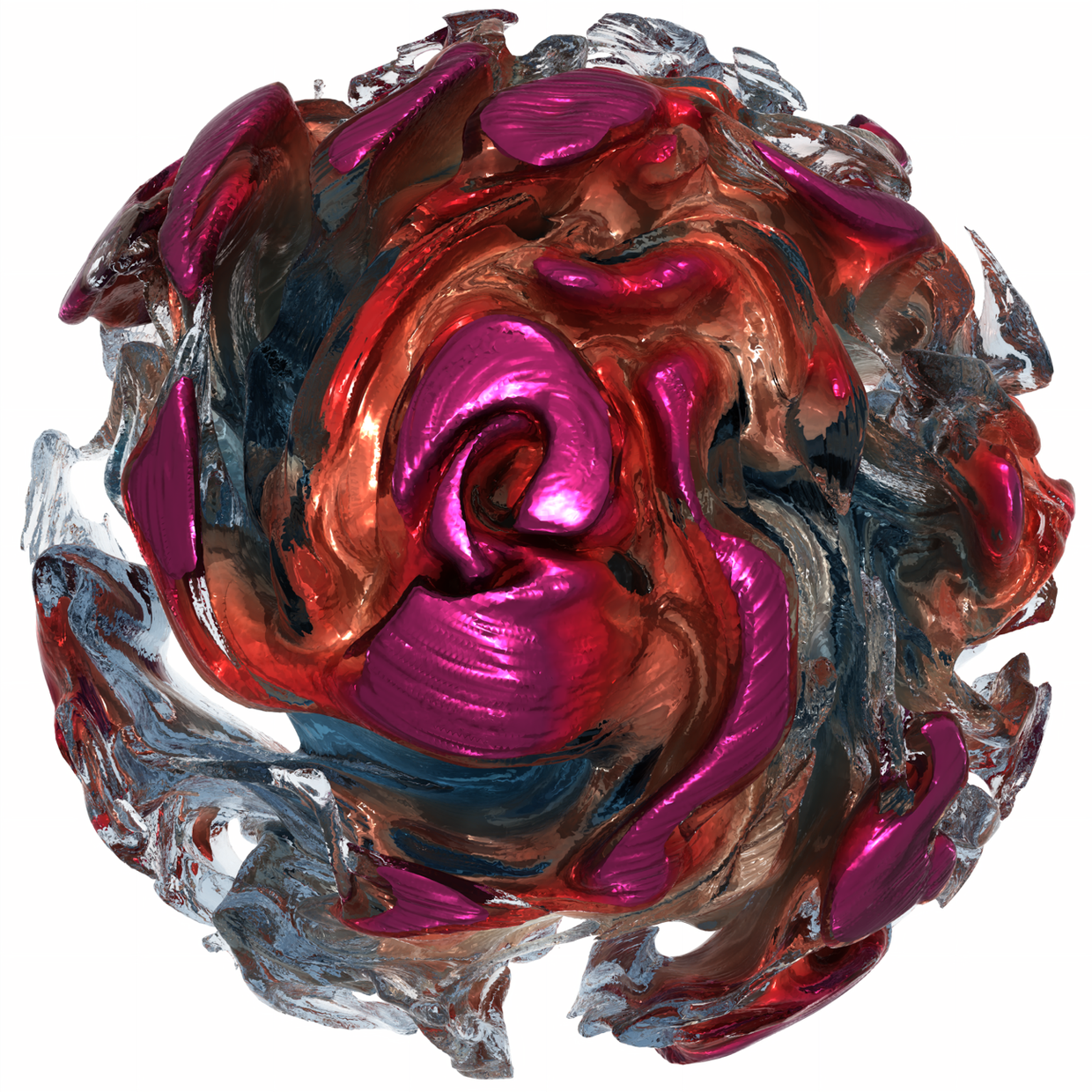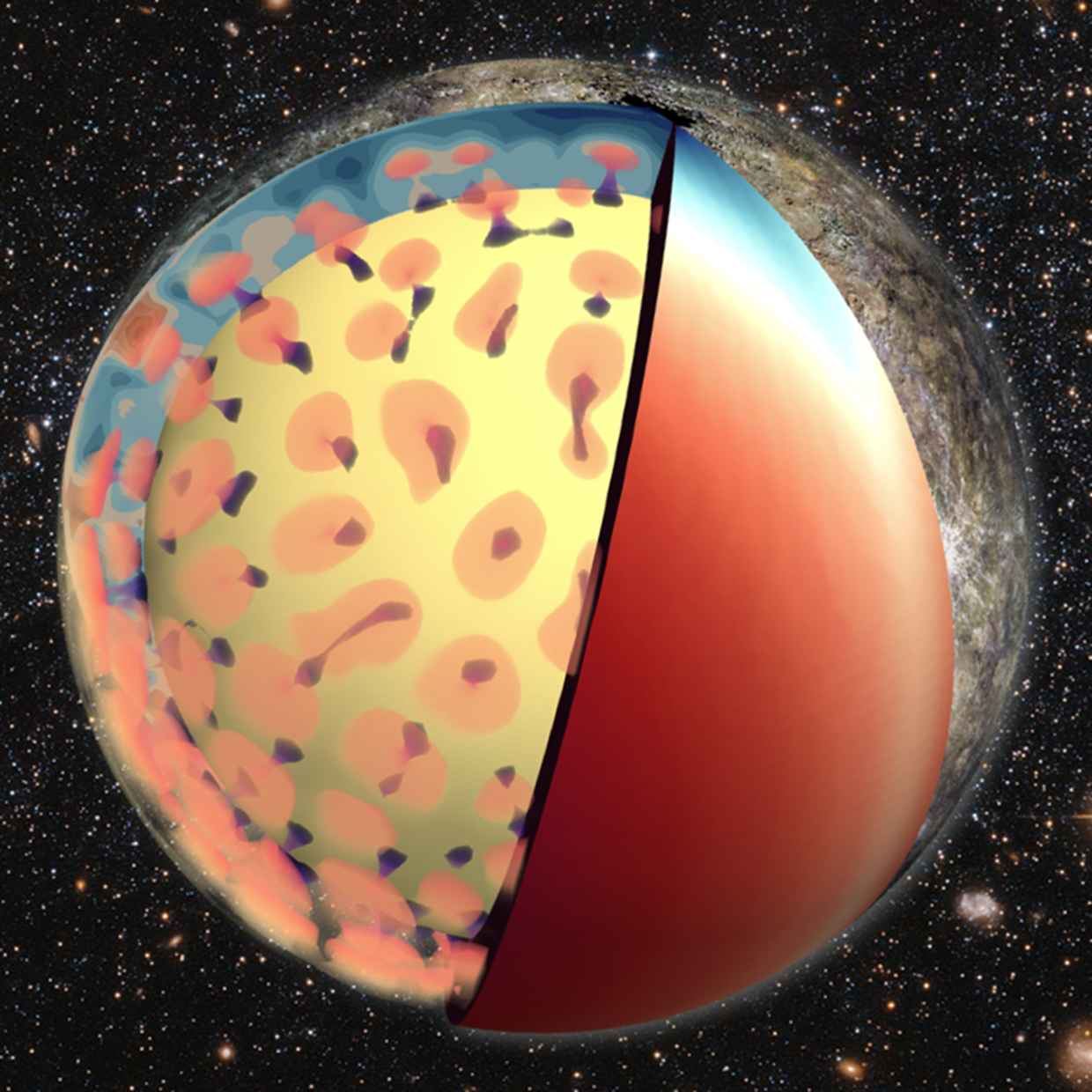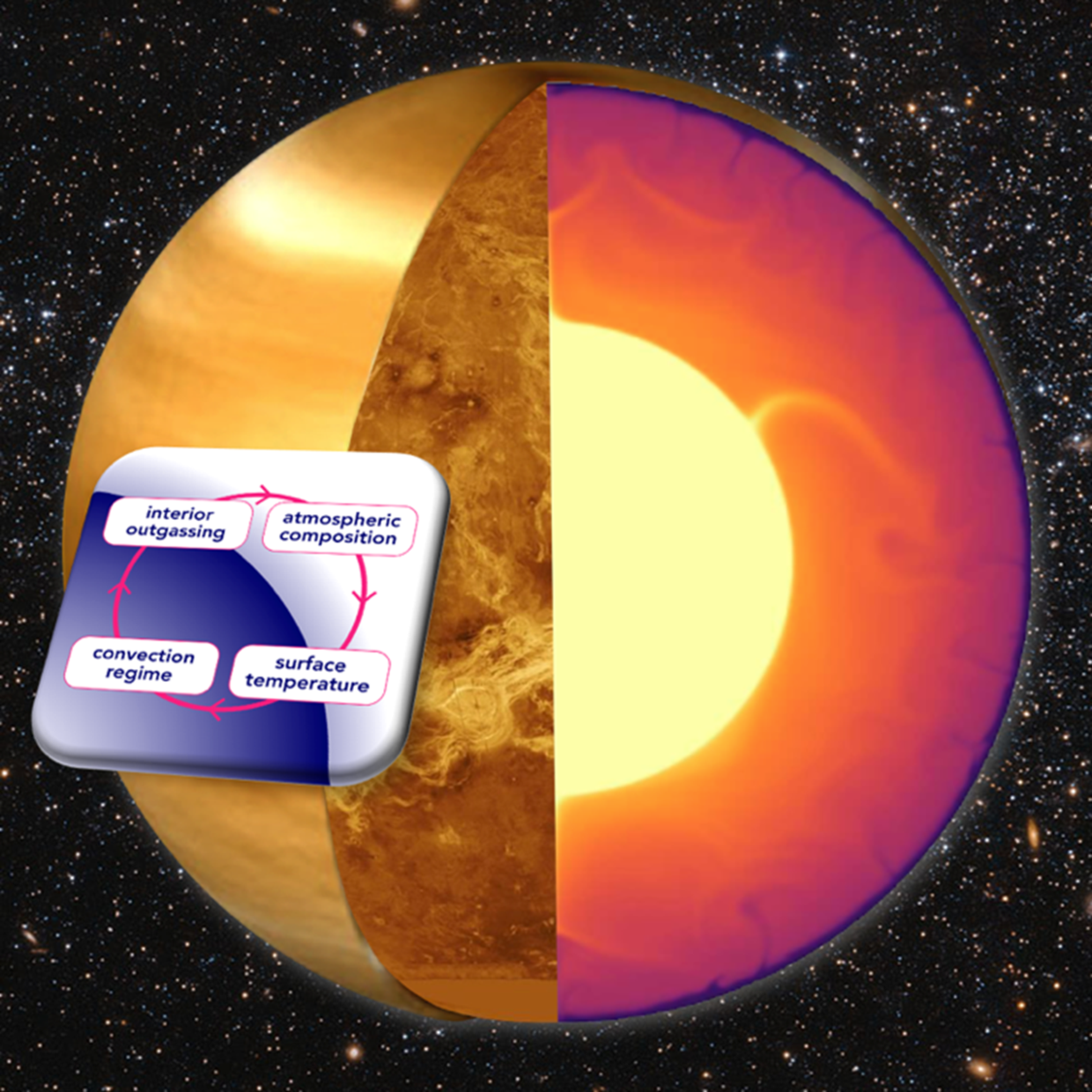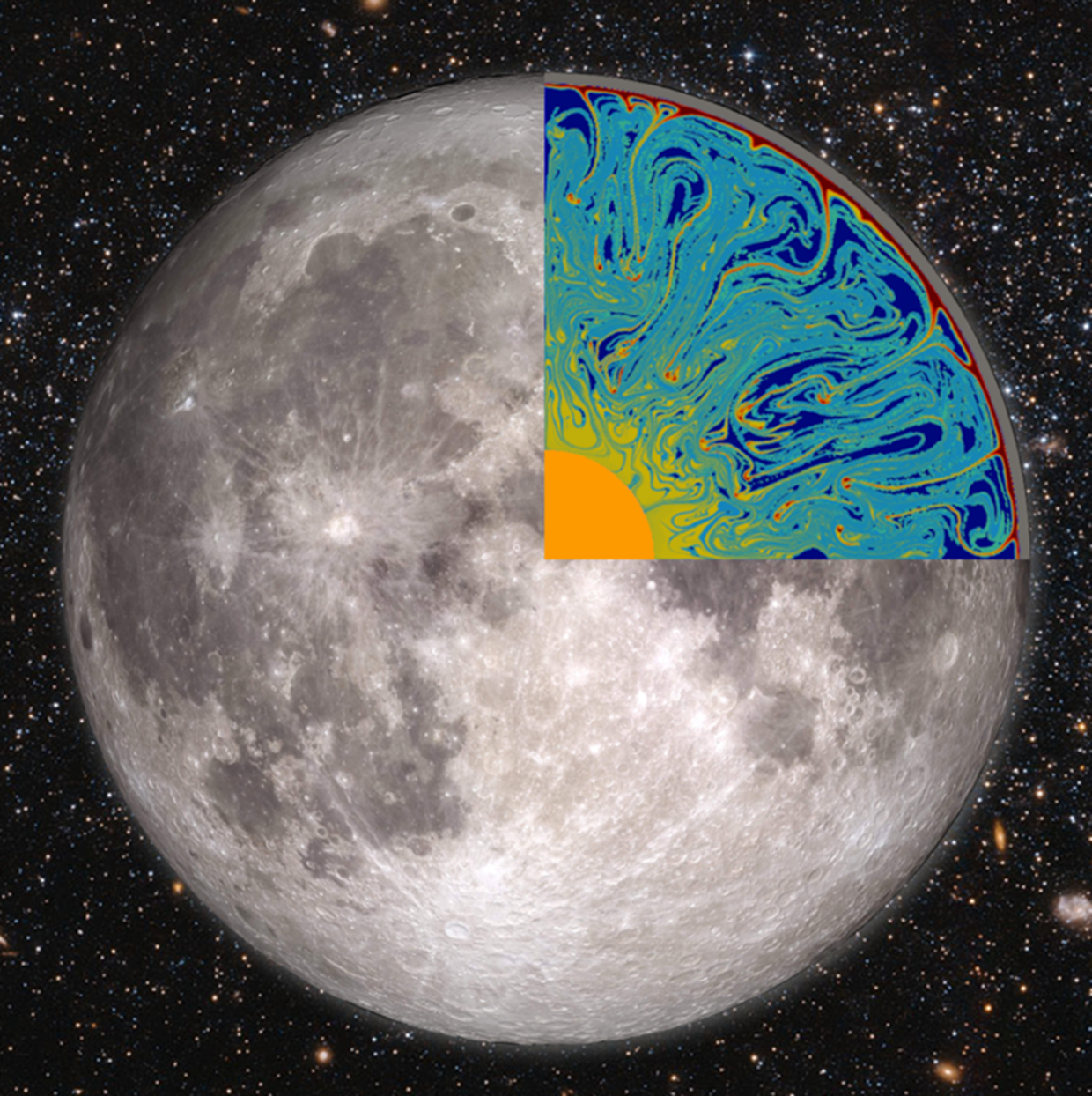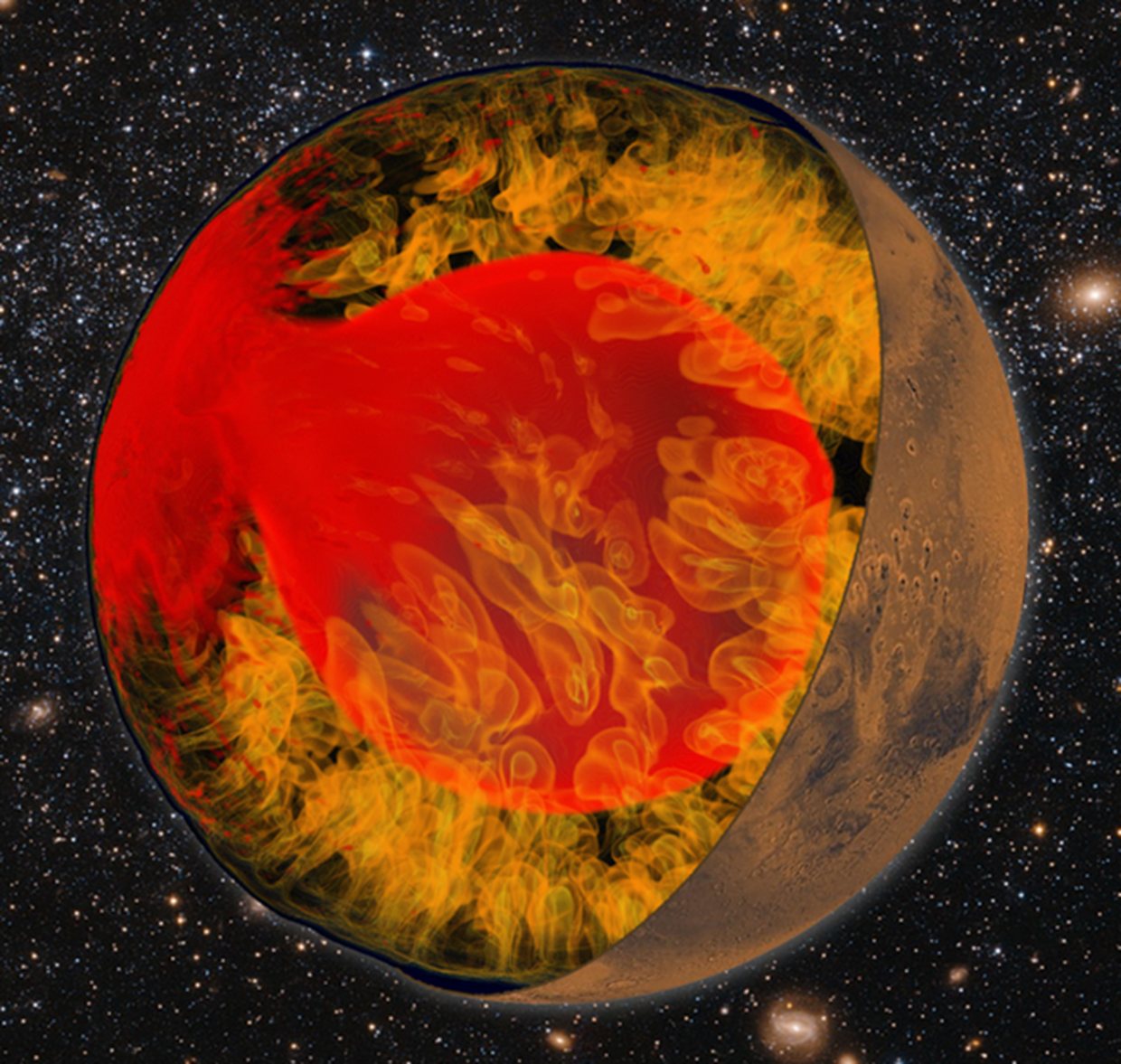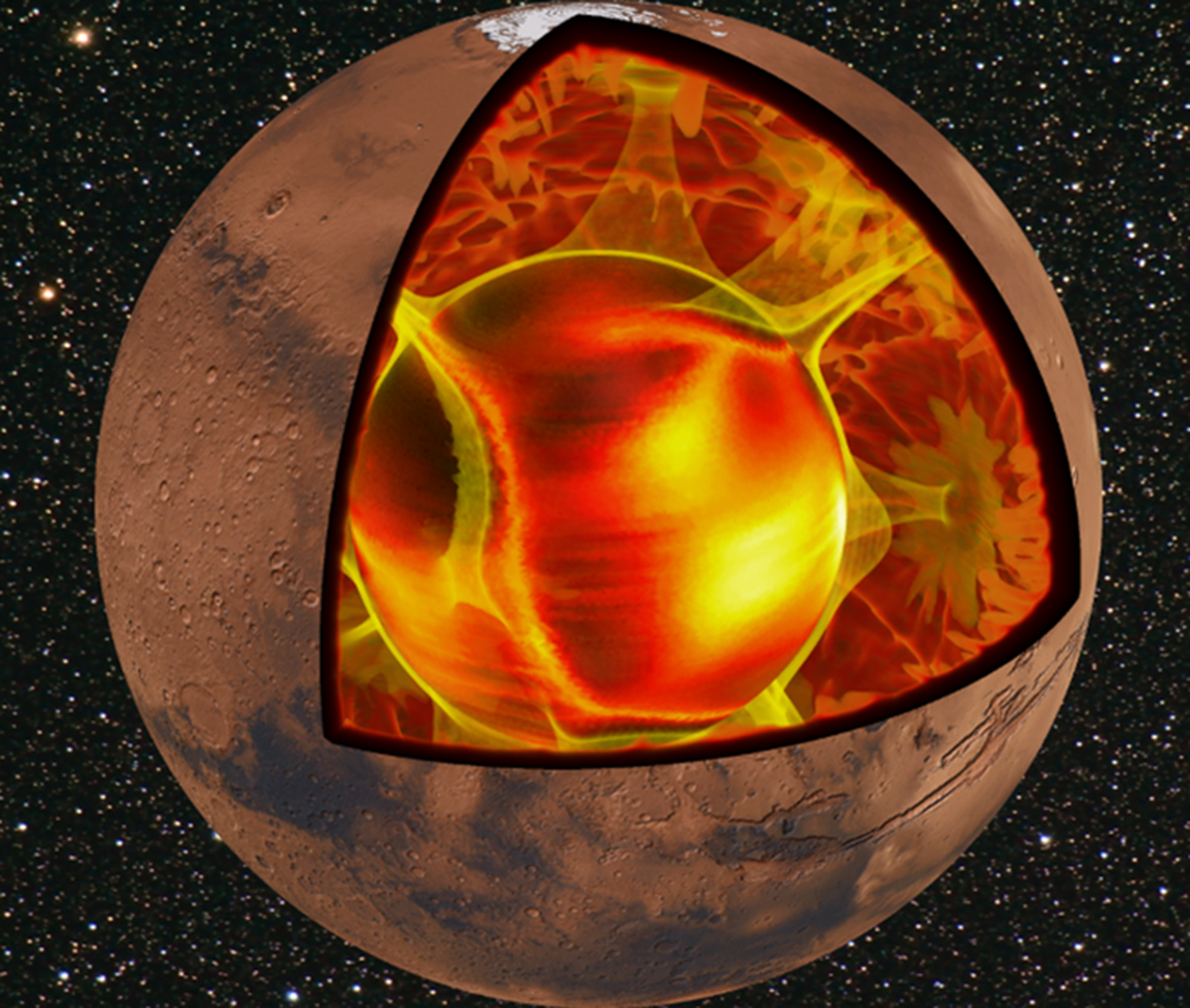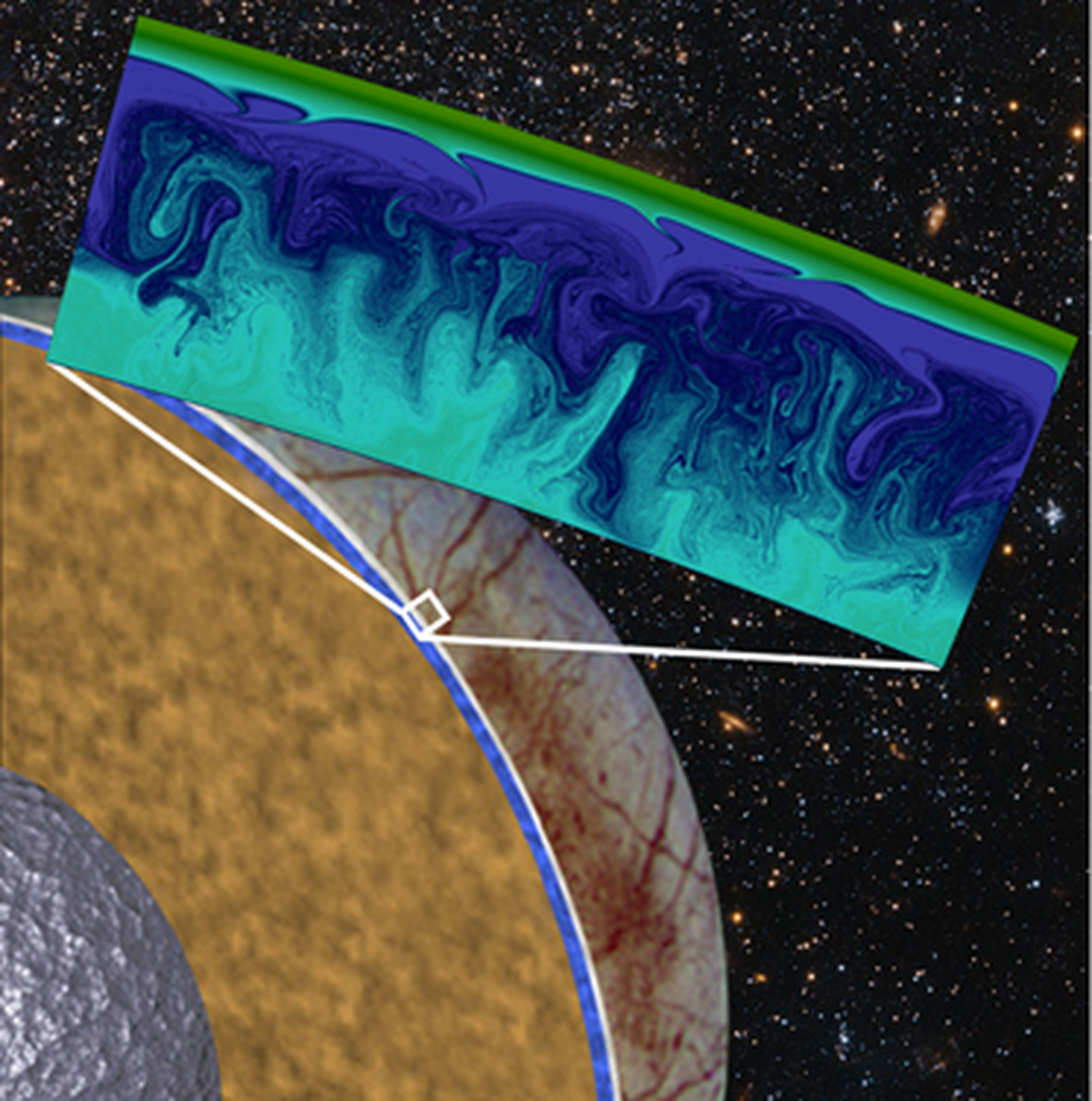Introduction
Over the past decades, large-scale computer simulations have grown to become one of the most powerful approaches to study the interior of Earth-like planets. Geodynamical models are used to investigate the evolution and distribution of the temperature inside the planet that ultimately affects its structure and the way the planet cools over time. Combined with data obtained from planetary missions and laboratory experiments, these models help us to improve our understanding of the history and current state of planets in our Solar System and beyond. These models can teach us about the formation and evolution of planetary environments.
| Principal Investigator: | Dr. Ana-Catalina Plesa |
| Project Manager: | Dr. Ana-Catalina Plesa |
| Researchers: | Irene Bernt, Aymeric Fleury, Christian Hüttig, Tina Rückriemen-Bez, Iris van Zelst |
| Date published: | April 2022 |
| HPC Platform used: | HoreKa |
| Affiliation: | German Aerospace Center (DLR) |
| Institute: | Institute of Planetary Research |
| Research Field: | Geosciences |
| Project ID: | TED-IPM |
Project description
The interior dynamics of rocky mantles and icy shells are connected with the structures observed at the surface through processes such as partial melting, crustal production and mantle differentiation, as well as formation and evolution of heterogeneities (e.g., depleted rocky mantle material or salts and other impurities in the ice shell).
We focus on modeling the thermochemical convection in the mantles of Mercury, Venus the Moon, and Mars, as well as in the ice shell of Jupiter's moon Europa. We investigate the internal dynamics of rocky mantles and icy shells by using the mantle convection code GAIA (Fig. 1) - Generic Automaton for planetary Interior Analysis (Hüttig et al., 2013).
Mercury's rotation is a peculiar one - the planet rotates three times on its axis for every two revolutions around the Sun. This leads to specific surface temperature variations with hot and cold regions around the equator and at the poles. We model the effects of the crustal thickness and surface temperature variations on the interior dynamics and long-term thermochemical evolution of Mercury. Our models (Fig. 2) can be used to predict the heat flow at the surface of the planet and at its core-mantle boundary. The latter is important to understand the evolution of Mercury's core and why Mercury is the only rocky planet in our Solar System beside the Earth that has an active magnetic field today.
Extensive outgassing and a greenhouse effect such as the one observed on Venus can directly affect surface mobilization and thus the interior of a planet. The feedback between the atmosphere and mantle can be quite complex and thus coupled interior-atmosphere models (van Zelst et al., 2022) are necessary to investigate the thermochemical evolution of Venus and Venus-like exoplanets (Fig. 3). Moreover, our models can be used to derive parameters such as the thermal state of the lithosphere (Vaujour et al., 2022) or the planet's deformation (Walterova et al., 2021). These can inform future measurements of the recently selected Venus missions (Ghail et al. 2016; Smrekar et al., 2019).
During its early evolution, the Moon experienced a global magma ocean phase due to the large amount of heat released during its formation. Upon its solidification, this magma ocean left behind a chemically-stratified mantle with distinct compositional layers whose densities increase toward the surface (Elkins-Tanton et al., 2011). Subsequent evolution and melting of these layers, which are prone to overturn, may lead to the diversity of compositions observed for the basaltic material at the lunar surface. We model the evolution of a heterogeneous lunar mantle (Fig. 4) to understand the consequences of a post-magma ocean layered mantle structure on subsequent thermochemical evolution of the Moon and compare our results with present-day observations (Bernt et al., 2022).
On Mars, recent measurements performed by the InSight mission (Banerdt et al., 2020) provided unprecedented constraints for the interior structure and thermal state of the planet (Knapmeyer-Endrun et al., 2021; Khan et al., 2021; Stähler et al., 2021). Our geodynamical models (Fig. 5a & 5b) that address the thermochemical history of Mars are used to interpret the available data in a global context and to understand the effects of mantle dynamics and present-day thermal state on the seismic observations (Plesa et al., 2021). By considering additional geological, geophysical and geochemical constraints, our models aim to reconstruct the thermochemical evolution of Mars on a global scale.
Thermochemical convection and redistribution of salts within the ice shell of Europa is suggested to play an important role for the chemical heterogeneities identified on Europa's surface by Galileo Near-Infrared Mapping Spectrometer (NIMS) measurements (Carlson et al., 1992). The redistribution of salts may lead to the formation of brines, whose stability and distribution within the ice shell is poorly known. We model convection in Europa's ice shell (Fig. 6, Plesa et al., 2020) in order to understand the formation and evolution of brine pockets that are ultimately important to assess the astrobiological potential of Jupiter's moon Europa.
References
Banerdt, W. B., Smrekar, S. E., Banfield, D., Giardini, D., Golombek, M., Johnson, C. L., ... & Wieczorek, M. (2020). Initial results from the InSight mission on Mars. Nature Geoscience, 13(3), 183-189.
Bernt, I., Plesa, A.-C., Schwinger, S., Collinet, M., & Breuer, D. (2022). Effects of Magma Ocean Crystallization on the Long-Term Thermochemical Evolution of the Moon. In Lunar and Planetary Science Conference (No. 1471).
Carlson, R. W., Weissman, P. R., Smythe, W. D., & Mahoney, J. C. (1992). Near-infrared mapping spectrometer experiment on Galileo. In The Galileo Mission (pp. 457-502). Springer, Dordrecht.
Elkins-Tanton, L. T., Burgess, S., & Yin, Q. Z. (2011). The lunar magma ocean: Reconciling the solidification process with lunar petrology and geochronology. Earth and Planetary Science Letters, 304(3-4), 326-336.
Ghail, R., Wilson, C. F., & Widemann, T. (2016, October). EnVision M5 venus orbiter proposal: Opportunities and challenges. In AAS/Division for Planetary Sciences Meeting Abstracts# 48 (Vol. 48, pp. 216-08).
Hüttig, C., Tosi, N., & Moore, W. B. (2013). An improved formulation of the incompressible Navier–Stokes equations with variable viscosity. Physics of the Earth and Planetary Interiors, 220, 11-18.
Khan, A., Ceylan, S., van Driel, M., Giardini, D., Lognonné, P., Samuel, H., ... & Banerdt, W. B. (2021). Upper mantle structure of Mars from InSight seismic data. Science, 373(6553), 434-438.
Knapmeyer-Endrun, B., Panning, M. P., Bissig, F., Joshi, R., Khan, A., Kim, D., ... & Banerdt, W. B. (2021). Thickness and structure of the martian crust from InSight seismic data. Science, 373(6553), 438-443.
Plesa, A. C., Kowalski, J., & Rückriemen-Bez, T. (2020). Compositional convection in Europa’s ice shell: a scale-coupled approach (No. EPSC2020-1038). Copernicus Meetings.
Plesa, A.-C., Bozdağ, E., Rivoldini, A., Knapmeyer, M., McLennan, S. M., Padovan, S., ... & Spohn, T. (2021). Seismic velocity variations in a 3D Martian mantle: implications for the InSight measurements. Journal of Geophysical Research: Planets, 126(6), e2020JE006755.
Smrekar, S., Hensley, S., Dyar, D., & Helbert, J. (2019). VERITAS (Venus Emissivity, Radio science, InSAR, Topography And Spectroscopy): a proposed discovery mission.
Stähler, S. C., Khan, A., Banerdt, W. B., Lognonné, P., Giardini, D., Ceylan, S., ... & Smrekar, S. E. (2021). Seismic detection of the martian core. Science, 373(6553), 443-448.
van Zelst, I., Plesa, A.-C., Brachmann, C., & Breuer, D. (2022). Exploring Feedbacks Between the Interior and Atmosphere of Venus: CO2 and H2O. In Lunar and Planetary Science Conference (No. 1027).
Vaujour, T., Plesa, A.-C., Walterova, M., & Breuer, D. (2022). Thermal Evolution, Magmatic Style, and Tidal Deformation of Venus. In Lunar and Planetary Science Conference (No. 1422).
Walterova, M., Plesa, A. C., Baumeister, P., Breuer, D., & Wagner, F. (2021). Coupled Thermal Evolution and Tidal Deformation of Venus. In AGU Fall Meeting (No. P45E-2482).

